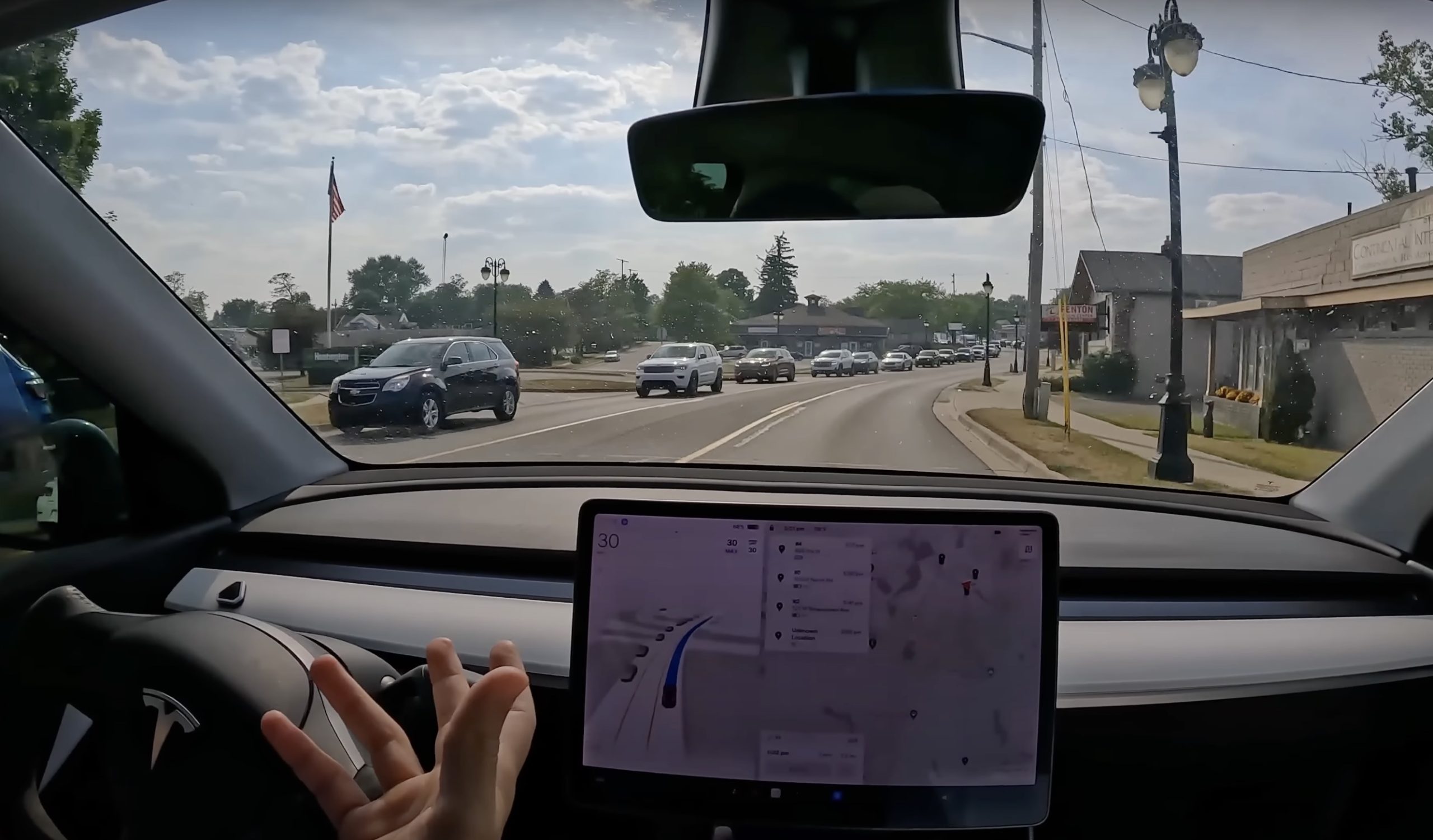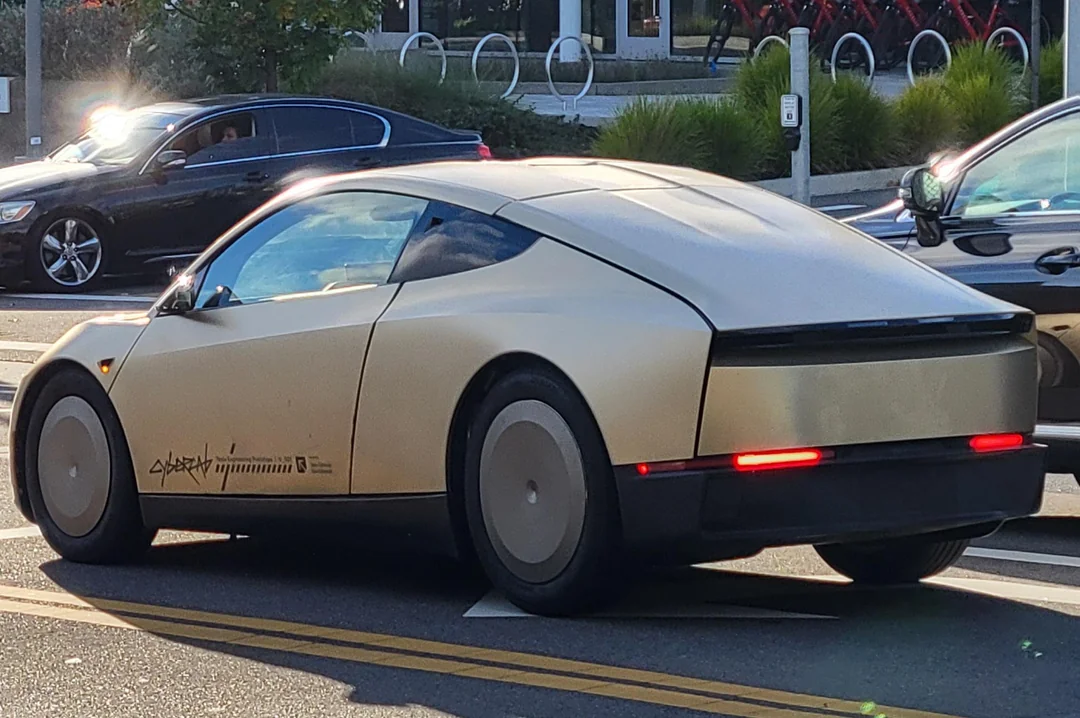

News
Elon Musk says next FSD version to let drivers wear sunglasses
Tesla’s next version of Full Self-Driving (FSD) has been widely discussed in recent weeks, and a new update from CEO Elon Musk over the weekend highlights the fact that it won’t prevent drivers from wearing sunglasses anymore.
The FSD Supervised system uses a driver monitoring feature that makes sure drivers remain attentive and awake, though the system won’t allow the driver to wear sunglasses with the system engaged without nags. In response to one X user complaining about not being able to wear sunglasses while using FSD on Saturday, Musk wrote that the issue would be fixed in v12.5, to which many users in the thread expressed appreciation.
Should be fixed in 12.5
— Elon Musk (@elonmusk) July 21, 2024
Tesla FSD v12.4.1 with no nag starts rolling out to select customers
It’s still not clear exactly when Tesla plans to start deploying FSD Supervised v12.5.
Musk originally said that FSD v12.5 would be out in late June, and many are especially waiting for the update as it’s expected to finally bring FSD Supervised to the Cybertruck. Despite missing the late June target for the release, Musk has highlighted a handful of the other improvements in the version, as well as noting on Thursday that the release was in fact ready to hit the Cybertruck upon its deployment.
He also said this month that FSD Supervised v12.5 will finally merge the city and highway software stacks, as was previously done with v11, though it was apparently rolled back at some point with the arrival of v12.
Tesla started rolling out FSD Supervised v12.4.3 to some customers earlier this month, after previous versions had been delayed due to an extremely low level of interventions—and after the company essentially halted the rollout of v12.4.2.
Musk highlighted the issue of low interventions earlier this month.
The amount of testing time it takes to figure out if the new AI is better than the existing AI as measured by miles between interventions is the limiting factor on progress.
The better FSD gets the longer it takes to find interventions.
— Elon Musk (@elonmusk) July 12, 2024
He also detailed the problem during Tesla’s Annual Shareholder Meeting last month, explaining that the fewer interventions there are, the more difficult it becomes to test versions and point versions against each other to see which ones are performing best.
“And then, like I was saying earlier, it actually gets, as the system gets better, it gets harder to figure out which AI model is better, because now you know, like, ‘Okay, it’s thousands of miles between interventions.’
“How do we, as quickly as possible, figure out which AI model is better. And when you make these different AI models, they’re obviously not like super deterministic, so we have a new model that eliminates one problem but creates another problem. So we’re trying to solve this by a combination of simulation, uploading models, having them run in Shadow Mode.
“It’s actually kind of helpful that not everyone has Full Self-Driving, because we can see, we can run it in Shadow Mode and see, ‘What would this new model have done compared to what the user did?’
“So since we’ve got, you know, millions of cars that we can do this with, that gives us a delta between what the AI model predicted would do and the user would do. And if you kind of sum up the errors between them, you can see ‘Oh, there was a bigger error stack from this model versus that model,’ when you uploaded them into, each uploaded them into 100,000 cars.
“But that’s the biggest limiter right now. It’s not training, it’s not data, it’s actually testing the AI models. And then figuring out clever ways to figure out if a new model is better or not. Like there were sort of particular intersections that are difficult.”
RELATED:
Tesla offers owners $1,000 off to upgrade from EAP to FSD in new car
What are your thoughts? Let me know at zach@teslarati.com, find me on X at @zacharyvisconti, or send us tips at tips@teslarati.com.

News
Tesla Model 3 named New Zealand’s best passenger car of 2025
Tesla flipped the switch on Full Self-Driving (Supervised) in September, turning every Model 3 and Model Y into New Zealand’s most advanced production car overnight.

The refreshed Tesla Model 3 has won the DRIVEN Car Guide AA Insurance NZ Car of the Year 2025 award in the Passenger Car category, beating all traditional and electric rivals.
Judges praised the all-electric sedan’s driving dynamics, value-packed EV tech, and the game-changing addition of Full Self-Driving (Supervised) that went live in New Zealand this September.
Why the Model 3 clinched the crown
DRIVEN admitted they were late to the “Highland” party because the updated sedan arrived in New Zealand as a 2024 model, just before the new Model Y stole the headlines. Yet two things forced a re-evaluation this year.
First, experiencing the new Model Y reminded testers how many big upgrades originated in the Model 3, such as the smoother ride, quieter cabin, ventilated seats, rear touchscreen, and stalk-less minimalist interior. Second, and far more importantly, Tesla flipped the switch on Full Self-Driving (Supervised) in September, turning every Model 3 and Model Y into New Zealand’s most advanced production car overnight.
FSD changes everything for Kiwi buyers
The publication called the entry-level rear-wheel-drive version “good to drive and represents a lot of EV technology for the money,” but highlighted that FSD elevates it into another league. “Make no mistake, despite the ‘Supervised’ bit in the name that requires you to remain ready to take control, it’s autonomous and very capable in some surprisingly tricky scenarios,” the review stated.
At NZ$11,400, FSD is far from cheap, but Tesla also offers FSD (Supervised) on a $159 monthly subscription, making the tech accessible without the full upfront investment. That’s a game-changer, as it allows users to access the company’s most advanced system without forking over a huge amount of money.
News
Tesla starts rolling out FSD V14.2.1 to AI4 vehicles including Cybertruck
FSD V14.2.1 was released just about a week after the initial FSD V14.2 update was rolled out.

It appears that the Tesla AI team burned the midnight oil, allowing them to release FSD V14.2.1 on Thanksgiving. The update has been reported by Tesla owners with AI4 vehicles, as well as Cybertruck owners.
For the Tesla AI team, at least, it appears that work really does not stop.
FSD V14.2.1
Initial posts about FSD V14.2.1 were shared by Tesla owners on social media platform X. As per the Tesla owners, V14.2.1 appears to be a point update that’s designed to polish the features and capacities that have been available in FSD V14. A look at the release notes for FSD V14.2.1, however, shows that an extra line has been added.
“Camera visibility can lead to increased attention monitoring sensitivity.”
Whether this could lead to more drivers being alerted to pay attention to the roads more remains to be seen. This would likely become evident as soon as the first batch of videos from Tesla owners who received V14.21 start sharing their first drive impressions of the update. Despite the update being released on Thanksgiving, it would not be surprising if first impressions videos of FSD V14.2.1 are shared today, just the same.
Rapid FSD releases
What is rather interesting and impressive is the fact that FSD V14.2.1 was released just about a week after the initial FSD V14.2 update was rolled out. This bodes well for Tesla’s FSD users, especially since CEO Elon Musk has stated in the past that the V14.2 series will be for “widespread use.”
FSD V14 has so far received numerous positive reviews from Tesla owners, with numerous drivers noting that the system now drives better than most human drivers because it is cautious, confident, and considerate at the same time. The only question now, really, is if the V14.2 series does make it to the company’s wide FSD fleet, which is still populated by numerous HW3 vehicles.
News
Waymo rider data hints that Tesla’s Cybercab strategy might be the smartest, after all
These observations all but validate Tesla’s controversial two-seat Cybercab strategy, which has caught a lot of criticism since it was unveiled last year.

Toyota Connected Europe designer Karim Dia Toubajie has highlighted a particular trend that became evident in Waymo’s Q3 2025 occupancy stats. As it turned out, 90% of the trips taken by the driverless taxis carried two or fewer passengers.
These observations all but validate Tesla’s controversial two-seat Cybercab strategy, which has caught a lot of criticism since it was unveiled last year.
Toyota designer observes a trend
Karim Dia Toubajie, Lead Product Designer (Sustainable Mobility) at Toyota Connected Europe, analyzed Waymo’s latest California Public Utilities Commission filings and posted the results on LinkedIn this week.
“90% of robotaxi trips have 2 or less passengers, so why are we using 5-seater vehicles?” Toubajie asked. He continued: “90% of trips have 2 or less people, 75% of trips have 1 or less people.” He accompanied his comments with a graphic showing Waymo’s occupancy rates, which showed 71% of trips having one passenger, 15% of trips having two passengers, 6% of trips having three passengers, 5% of trips having zero passengers, and only 3% of trips having four passengers.
The data excludes operational trips like depot runs or charging, though Toubajie pointed out that most of the time, Waymo’s massive self-driving taxis are really just transporting 1 or 2 people, at times even no passengers at all. “This means that most of the time, the vehicle being used significantly outweighs the needs of the trip,” the Toyota designer wrote in his post.
Cybercab suddenly looks perfectly sized
Toubajie gave a nod to Tesla’s approach. “The Tesla Cybercab announced in 2024, is a 2-seater robotaxi with a 50kWh battery but I still believe this is on the larger side of what’s required for most trips,” he wrote.
With Waymo’s own numbers now proving 90% of demand fits two seats or fewer, the wheel-less, lidar-free Cybercab now looks like the smartest play in the room. The Cybercab is designed to be easy to produce, with CEO Elon Musk commenting that its product line would resemble a consumer electronics factory more than an automotive plant. This means that the Cybercab could saturate the roads quickly once it is deployed.
While the Cybercab will likely take the lion’s share of Tesla’s ride-hailing passengers, the Model 3 sedan and Model Y crossover would be perfect for the remaining 9% of riders who require larger vehicles. This should be easy to implement for Tesla, as the Model Y and Model 3 are both mass-market vehicles.









